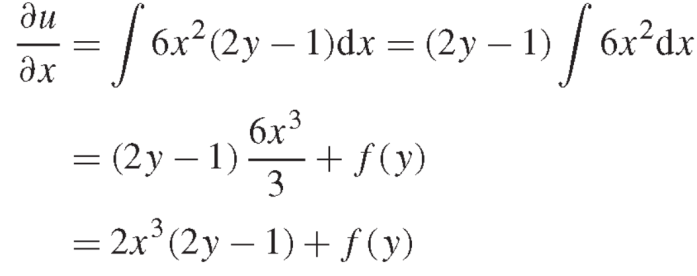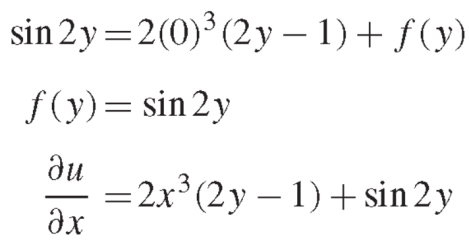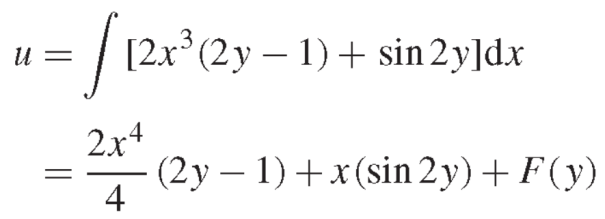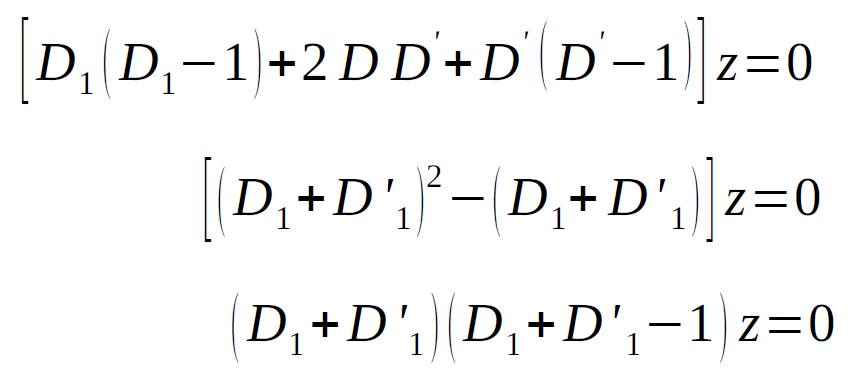Unit 1
Partial differential equation
Question-1: Form a partial differential equation from-

Sol.
Here we have-

It contains two arbitrary constants a and c
Differentiate the equation with respect to p, we get-

Or

Now differentiate the equation with respect to q, we get-


Now eliminate ‘c’,
We get

Now put z-c in (1), we get-

Or

Question-2: Solve the differential equation-

Sol: Given the boundary condition that-
At x = 0, 
Sol.
Here we have-

On integrating partially with respect to x, we get-

Here f(y) is an arbitrary constant.
Now form the boundary condition-
When x = 0,

Hence-

On integrating partially w.r.t.x, we get-

Question-3: Solve 
Solution. Rewriting the given equation as

The subsidiary equations are 
The first two fractions give 
Integrating we get  n (i)
n (i)
Again the first and third fraction give xdx = zdz
Integrating, we get 
Hence from (i) and (ii), the complete solution is

Question-4: Solve-

Sol.
We have-

Then the auxiliary equations are-

Consider the first two equations only-


On integrating
 …….. (2)
…….. (2)
Now consider the last two equations-


On integrating we get-
 …………… (3)
…………… (3)
From equation (2) and (3)-

Question-5: Solve-

Sol.
Let-

That means-

Put these values of p and q in

Question-6: Solve-

Sol.
Let
Charpit’s subsidiary equations are-

So that- dq = 0 or q = a
On putting q = a in (1) we get-

Such that-

Integrating

Or

Which is the required solution.
Question-7: Find the characteristics of 
Sol.
Here we have-

Now comparing (1) with-
Rr + Ss + Tt + f(x, y, z, p, q) = 0
We get-
R = 
Now we see that-

Hence the equation is parabolic.
The  is given by-
is given by-

Putting the values of R, S, and T in this, we get-

Now simplifying (2), we get-

Solving it we get the repeated roots given by

Therefore we get only ne family of the characteristic of (1).
The characteristic equation of (1) is-

On integrating, we get-
log y – log x = log 

Which is the required family of characteristics and it represents a family of straight lines passing through the origin.
Question-8: Solve 
Solution. 
Its auxiliary equation is


The required solution is 
Question-9: Solve

Solution.

Given equation in symbolic form is
(D3-3D2 D'+4D'3)z=ex+2y
It’s A.E. is  where m = -1,2, 2
where m = -1,2, 2


Put, D=1,D’=2

Hence the complete solution is

Question-10: Solve 
Sol.
A.E. is 
C.F. = 


It is a case of failure.
Now, 




Question-11: Solve 
Solution. 
A.E. is 











Hence the complete solution is 
Question-12: Solve 
Solution.







Hence the complete solution is 
Question-13: Solve-

Sol.
The above PDE can be written as-

Now put

Which gives-


Then the equation (1) can be written as-

Hence the required solution will be-
